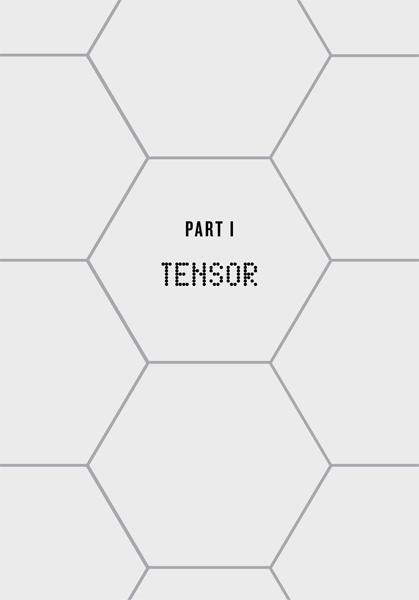
Полная версия:
Micro


Copyright
This is a work of fiction. The characters, incidents, and dialogues are products of the authors’ imaginations and are not to be construed as real. Any resemblance to actual persons, living or dead, is entirely coincidental.
HarperCollinsPublishers Ltd.
1 London Bridge Street
London SE1 9GF
www.harpercollins.co.uk
Published by HarperCollinsPublishers 2011
Copyright © 2011 by The John Michael Crichton Trust.
Cover design by Richard Augustus
Front Cover Image © Shutterstock Book Design by Lucy Albanese Illustrated Maps © 2011 by Rodica Prato
Michael Crichton and Richard Preston assert the moral right to be identified as the authors of this work
A catalogue record for this book is available from the British Library
All rights reserved under International and Pan-American Copyright Conventions. By payment of the required fees, you have been granted the non-exclusive, non-transferable right to access and read the text of this ebook on-screen. No part of this text may be reproduced, transmitted, down-loaded, decompiled, reverse engineered, or stored in or introduced into any information storage and retrieval system, in any form or by any means, whether electronic or mechanical, now known or hereinafter invented, without the express written permission of HarperCollins ebooks
Source ISBN: 9780007350032
Ebook Edition © NOVEMBER 2011 ISBN: 9780007384358
Version: 2017-05-10
Dedication

Epigraph
MINUTE CREATURES swarm around us…objects of potentially endless study and admiration, if we are willing to sweep our vision down from the world lined by the horizon to include the world an arm’s length away. A lifetime can be spent in a Magellanic voyage around the trunk of a tree.
—E. O. WILSON
Contents
Title Page
Copyright
Dedication
Epigraph
Introduction
Map of Oahu
Map of The Pali
The Seven Graduate Students
PART I: TENSOR
Prologue
Chapter 1
Chapter 2
Chapter 3
Chapter 4
Chapter 5
Chapter 6
Chapter 7
Chapter 8
Chapter 9
Chapter 10
Chapter 11
Chapter 12
Chapter 13
PART II: A BAND OF HUMANS
Chapter 14
Chapter 15
Chapter 16
Chapter 17
Chapter 18
Chapter 19
Chapter 20
Chapter 21
Chapter 22
Chapter 23
Chapter 24
Chapter 25
Chapter 26
PART III: TANTALUS
Chapter 27
Chapter 28
Chapter 29
Chapter 30
Chapter 31
Chapter 32
Chapter 33
Chapter 34
Chapter 35
Chapter 36
Chapter 37
Chapter 38
Chapter 39
Chapter 40
Chapter 41
Chapter 42
Chapter 43
Chapter 44
Chapter 45
Chapter 46
Chapter 47
Chapter 48
Chapter 49
Chapter 50
Chapter 51
Chapter 52
Read on for an extract from the gripping new novel from Michael Crichton:
Bibliography
About the Authors
Also by Michael Crichton
About the Publisher
Introduction
What Kind of World Do We Live In?
In 2008, the famous naturalist David Attenborough expressed concern that modern schoolchildren could not identify common plants and insects found in nature, although previous generations identified them without hesitation. Modern children, it seemed, were cut off from the experience of nature, and from play in the natural world. Many factors were held up to blame: urban living; loss of open space; computers and the Internet; heavy homework schedules. But the upshot was that children were no longer being exposed to nature and no longer acquiring a direct experience of nature. It was ironic that this should be happening at a time when there was in the West an ever greater concern for the environment, and ever more ambitious steps proposed to protect it.
Indoctrinating children in proper environmental thought was a hallmark of the green movement, and so children were being instructed to protect something about which they knew nothing at all. It did not escape notice that this was exactly the formula that had led to well-intentioned environmental degradation in the past—the deterioration of American national parks being a prime example, and the American policy of forest fire prevention, another. Such policies would never have been instituted if people really understood the environments they were trying to protect.
The problem was that they thought they did. One can argue that the new generation of schoolchildren will emerge even more certain. If nothing else, school teaches that there is an answer to every question; only in the real world do young people discover that many aspects of life are uncertain, mysterious, and even unknowable. If you have a chance to play in nature, if you are sprayed by a beetle, if the color of a butterfly wing comes off on your fingers, if you watch a caterpillar spin its cocoon—you come away with a sense of mystery and uncertainty. The more you watch, the more mysterious the natural world becomes, and the more you realize how little you know. Along with its beauty, you may also come to experience its fecundity, its wastefulness, aggressiveness, ruthlessness, parasitism, and its violence. These qualities are not well-conveyed in textbooks.
Perhaps the single most important lesson to be learned by direct experience is that the natural world, with all its elements and interconnections, represents a complex system and therefore we cannot understand it and we cannot predict its behavior. It is delusional to behave as if we can, as it would be delusional to behave as if we could predict the stock market, another complex system. If someone claims to predict what a stock will do in the coming days, we know that person is either a crook or a charlatan. If an environmentalist makes similar claims about the environment, or an ecosystem, we have not yet learned to see him as a false prophet or a fool.
Human beings interact with complex systems very successfully. We do it all the time. But we do it by managing them, not by claiming to understand them. Managers interact with the system: they do something, watch for the response, and then do something else in an effort to get the result they want. There is an endless iterative interaction that acknowledges we don’t know for sure what the system will do—we have to wait and see. We may have a hunch we know what will happen. We may be right much of the time. But we are never certain.
Interacting with the natural world, we are denied certainty. And always will be.
How then can young people gain experience of the natural world? Ideally, by spending some time in a rain forest—those vast, uncomfortable, alarming, and beautiful environments that so quickly knock our preconceptions aside.
NOT FINISHED
MICHAEL CRICHTON
August 28, 2008
Map of Oahu

Map of the Pali

The Seven Graduate Students
Rick Hutter Ethnobotanist studying medicines used by indigenous peoples.
Karen King Arachnologist (expert in spiders, scorpions, and mites). Skilled in martial arts.
Peter Jansen Expert in venoms and envenomation.
Erika Moll Entomologist and coleopterist (beetle expert).
Amar Singh Botanist studying plant hormones.
Jenny Linn Biochemist studying pheromones, the signaling scents used by animals and plants.
Danny Minot Doctoral student writing a thesis on “scientific linguistic codes and paradigm transformation.”

Prologue
Nanigen
9 October, 11:55 p.m.
West of Pearl Harbor, he drove along the Farrington Highway past fields of sugar cane, dark green in the moonlight. This had long been an agricultural region of Oahu, but recently it had begun to change. Off to his left, he saw the flat steel rooftops of the new Kalikimaki Industrial Park, bright silver in the surrounding green. In truth, Marcos Rodriguez knew, this wasn’t much of an industrial park; most of the buildings were warehouses, inexpensive to rent. Then there was a marine supply store, a guy who made custom surfboards, a couple of machine shops, a metalworker. That was about it.
And, of course, the reason for his visit tonight: Nanigen MicroTechnologies, a new company from the mainland, now housed in a large building at the far end of the facility.
Rodriguez turned off the highway, drove down between silent buildings. It was almost midnight; the industrial park was deserted. He parked in front of Nanigen.
From the outside, the Nanigen building appeared like all the others: a single-story steel façade with a corrugated metal roof; in effect, nothing more than an enormous shed of crude, cheap construction. Rodriguez knew there was more to it than that. Before the company erected that building, they dug a pit deep into the lava rock, and had filled it with electronic equipment. Only then did they erect this unprepossessing façade, which was now covered in fine red dust from the nearby agricultural fields.
Rodriguez put on his rubber gloves, and slipped into his pocket his digital camera and infrared filter. Then he got out of his car. He wore a security guard uniform; he pulled his cap down over his face, in case there were cameras monitoring the street. He took out the key that he had taken from the Nanigen receptionist some weeks before, after her third Blue Hawaii had put her out cold; he had had it copied, then returned it to her before she woke up.
From her he had learned that Nanigen was forty thousand square feet of labs and high-tech facilities, where she said they did advanced work in robotics. What kind of advanced work, she wasn’t sure, except the robots were extremely small. “They do some kind of research on chemicals and plants,” she said vaguely.
“You need robots for that?”
“They do, yes.” She shrugged.
But she also told him the building itself had no security: no alarm system, no motion detectors, no guards, cameras, laser beams. “Then what do you use?” he asked her. “Dogs?”
The receptionist shook her head. “Nothing,” she said. “Just a lock on the front door. They say they don’t need any security.”
At the time, Rodriguez suspected strongly that Nanigen was a scam or a tax dodge. No high-technology company would house itself in a dusty warehouse, far from downtown Honolulu and the university, from which all high-tech companies drew. If Nanigen was way out here, they must have something to hide.
The client thought so, too. That’s why Rodriguez had been hired in the first place. Truth be told, investigating high-tech corporations wasn’t his usual line of work. Mostly he got calls from lawyers, asking him to photograph visiting husbands on Waikiki cheating on their wives. And in this case, too, he had been hired by a local lawyer, Willy Fong. But Willy wasn’t the client, and he wouldn’t say who was.
Rodriguez had his suspicions. Nanigen had supposedly spent millions of dollars on electronics from Shanghai and Osaka. Some of those suppliers probably wanted to know what was being done with their products. “Is that who it is, Willy? The Chinese or the Japanese?”
Willy Fong shrugged. “You know I can’t say, Marcos.”
“But it makes no sense,” Rodriguez had said. “The place got no security, your clients can pick the lock and walk in any night and see for themselves. They don’t need me.”
“You talking yourself out of a job?”
“I just want to know what this is about.”
“They want you to go and find out what’s in that building, and bring them some pictures. That’s all.”
“I don’t like it. I think it’s a scam.”
“Probably is.”
Willy gave him a tired look as if to say, But what do you care? “At least nobody’s going to get up from the dinner table and hit you in the mouth.”
“True.”
Willy pushed back his chair, folded his arms over his ample belly. “So tell me, Marcos. Are you going, or what?”
Now, walking toward the front door at midnight, Rodriguez felt suddenly nervous. They don’t need any security. What the hell did that mean? In this day and age, everybody had security—lots of security—especially around Honolulu. You had no choice.
There were no windows on the building, just a single metal door. Next to it, a sign: NANIGEN MICROTECHNOLOGIES, INC. And beneath it, BY APPOINTMENT ONLY.
He put the key in the lock and turned it. The door clicked open.
Too easy, he thought, as he glanced back at the empty street, and slipped inside.
Night lights illuminated a glass-walled entry area, receptionist’s desk, and a waiting area with couches, magazines, and company literature. Rodriguez flicked on his flashlight, moved to the hallway beyond. At the end of the hallway were two doors; he went through the first, and came into a new hallway, with glass walls. There were laboratories on both sides, long black benches with lots of equipment, stacks of bottles on the shelves above. Every dozen yards there was a humming stainless refrigerator and something that looked like a washing machine.
Cluttered bulletin boards, Post-its on the refrigerator, whiteboards with scribbled formulas—the general appearance seemed messy, but Rodriguez had the overwhelming sense that this company was real; that Nanigen was actually doing scientific work here. What did they need robots for?
And then he saw the robots, but they were damned strange: boxy silver metal contraptions, with mechanical arms and treads and appendages; they looked like what they send to Mars. They were various sizes and shapes: some the size of a shoebox, and others much bigger. Then he noticed that beside each one was a smaller version of the same robot. And beside that was a still smaller version. Eventually they were the size of a thumbnail: tiny, highly detailed. The workbenches had huge magnifying glasses so the workers could see the robots. But he wondered how they could build anything so small.
Rodriguez came to the end of the hall, and saw a door with a small sign: TENSOR CORE. He pushed it open, feeling a cool breeze. The room beyond was large and dark. To the right, he noticed rows of backpacks, hanging on hooks on the wall, as if for a camping trip. Otherwise the room was bare. There was a loud AC hum, but no other sound. He noticed the floor was etched with deep grooves in a hexagonal shape. Or perhaps they were big hexagonal tiles; in this low light he couldn’t be sure.
But then…there was something beneath the floor, he realized. An enormous, complex array of hexagonal tubes and copper wires, dimly visible. The floor was plastic, and he could look through it to see the electronics that had been buried in the ground.
Rodriguez crouched down to look more closely, and as he peered at the hexagons below, he saw a drop of blood spatter on the floor. Then another drop. Rodriguez stared curiously, before he thought to put his hand to his forehead. He was bleeding, just above his right eyebrow.
“What the—?” He’d been cut, somehow. He hadn’t felt anything but there was blood on his gloved hand, and blood still dripping from his eyebrow. He stood. The blood was dripping onto his cheek, and chin, and onto the uniform. He put his hand to his forehead and hurried into the nearest lab, looking for a Kleenex or a cloth. He found a box of tissues, and stepped to a washbasin with a small mirror over it. He dabbed at his face. The bleeding had already begun to stop; the cut was small but razor-sharp; he didn’t see how it had happened but paper cuts could look like that.
He glanced at his watch. It was twelve twenty. Time to get back to work. In the next moment, he saw a red gash open across the back of his hand, from his wrist to his knuckles, the skin spreading and starting to bleed. Rodriguez yelled in shock. He grabbed more tissues, then a towel hanging from the sink.
He ripped a strip off, and wrapped it around his hand. Then he felt a pain in his leg, and looking down saw that his trousers had been sliced halfway up his thigh, and he was bleeding from there, too.
Rodriguez wasn’t thinking anymore. He turned and ran.
Staggering down the hallway, back toward the front door, dragging his injured leg, aware he was leaving enough evidence to identify him later, but he didn’t care, he just wanted to get away.
Shortly before one a.m., he pulled up alongside Fong’s office. The light on the second floor was still on; Rodriguez stumbled up the back stairs. He was weak from loss of blood, but he was all right. He came in through the back door, not knocking.
Fong was there with another man Rodriguez had never seen before. A Chinese man in his twenties, wearing a black suit, smoking a cigarette. Fong turned. “What the hell happened to you? You look horrible.” Fong got up, locked the door, came back. “You get in a fight?”
Rodriguez leaned heavily on the desk. He was still dripping blood. The Chinese guy in black stepped back a bit, said nothing. “No, I did not get into a fight.”
“Then what the hell happened?”
“I don’t know. It just happened.”
“What you talking?” Fong said angrily. “You talk stink, man. What just happened?”
The Chinese kid coughed. Rodriguez looked over and saw a red arc was sliced beneath his chin. Blood flowed down his white shirt. The kid looked shocked. He put his hand up to his throat, and the blood seeped between his fingers. He fell over backward.
“Holy crap,” Willy Fong said. He scurried forward, looking at the kid on the floor. The kid’s heels were drumming on the ground; he was in spasm. “Did you do that?”
“No,” Rodriguez said, “that’s what I’m telling you.”
“This is a fucking mess,” Fong said. “You have to bring this back to my office? Did you think about it? Because cleaning this up is—”
Blood sprayed up the left side of Fong’s face. The cut artery in his neck pumped in spurts. He threw his hand over the wound, but it spurted through his fingers.
“Holy crap,” he said, and sagged into his chair. He stared at Rodriguez. “How?”
“No damned idea,” Rodriguez said. He knew what was coming. He just had to wait. He barely felt the slice at the back of his neck, but the dizziness came quickly, and he fell over. He was lying on his side, in a sticky pool of his own blood, staring at Fong’s desk. Fong’s shoes under the desk. And he thought, Bastard never gave me my money. And then darkness closed around him.
The headlines read THREE DEAD IN BIZARRE SUICIDE PACT. It was splashed all over the Honolulu Star-Advertiser. Sitting at his desk, Lieutenant Dan Watanabe tossed the paper aside. He looked up at his boss, Marty Kalama. “I’m getting calls,” Kalama said. Kalama had wire-framed spectacles and blinked a lot; he looked like a teacher, not a cop. But he was an akamai guy, knew what he was doing. Kalama said, “I hear there’s problems, Dan.”
“With suicide?” Watanabe nodded. “You bet, big problems. Makes no sense at all, if you ask me.”
“So where’d the papers get it?”
“Where they get everything,” Watanabe said. “They made it up.”
“Fill me in,” Kalama said.
Watanabe didn’t have to consult his notes. Days later, the scene remained vivid in his mind. “Willy Fong has an office on the second floor of one of those small buildings on Pu‘uhui Lane, off of Lillihi Street north of the freeway. Wooden building, kind of ratty, got four offices in it. Willy’s sixty, probably you knew him, defends DUIs for locals, small stuff, always been clean. Other people in the building complain of a smell coming from Willy’s offices, so we go up there and find three deceased males. ME says dead two to three days, can’t estimate closer than that. Air-conditioning was off, so the room got ripe. All three died of knife wounds. Willy got a cut carotid, bled out in his chair. Across the room is a young Chinese guy, no ID yet, he might be a national, throat cut both jugulars, bled out quick. Third vic is that Portugee with the camera, Rodriguez.”
“The one who photographs guys out cheating with their secretaries?”
“That’s him. Kept getting beat up. Anyway, he’s there too, and he’s got cuts all over his body—face, forehead, hand, legs, back of the neck. Never seen anything like it.”
“Test cuts?”
Watanabe shook his head. “No. Examiner says no, too. The injuries were done to him, and done over some period of time, maybe an hour. We got his blood on the back stairs, and his bloody footprints walking up. Blood in his car parked beside the building. So he was already bleeding when he walked in the door.”
“Then what do you think happened?”
“I got no idea,” Watanabe said. “If this is suicide, it’s three guys without notes, and nobody ever heard of that. Plus no knife, and we turned the place upside down looking, I can tell you. Plus it was locked from the inside, so nobody could have left. Windows were closed and locked, too. We dusted around the windows for prints anyway, just in case somebody entered by a window. No fresh prints around the windows, just a bunch of dirt.”
“Somebody flush a blade down the toilet?” Kalama asked.
“No,” Dan Watanabe answered. “There wasn’t any blood in the bathroom. Means nobody went in there after the cutting started. So we got three dead guys slashed to death in a locked room. No motive, no weapon, no nothing.”
“Now what?”
“That Portugee PI came from somewhere. He already got cut up somewhere else. I figure try to find out where that happened. Where it started.” Watanabe shrugged. “He had a gas receipt from Kelo’s Mobil in Kalepa. Filled the tank at ten p.m. We know how much gas he used, so we can get a radius of where he could drive from Kelo’s to his destination and then back to Willy’s.”
“Big radius. Must cover most of the island.”
“We’re chipping away. There’s fresh gravel in the tire treads. It’s crushed limestone. Good chance he went to a new construction site, something like that. Anyway, we’ll run it down. It may take us a while, but we’ll get that location.” Watanabe pushed the paper across the desk. “And in the meantime…I’d say the papers got it right. Triple suicide pact, and that’s the end of it. At least for now.”



